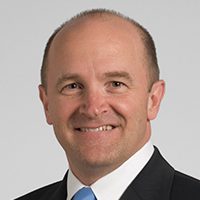The importance of financial flexibility in today’s dynamic healthcare environment
Does your organization have a financial strategy to move CAPEX to OPEX when possible? If so, what are the drivers behind this strategy?
Glenn Kaleta is a program director in financial planning at Northwestern Medicine in Chicago: We have guiding principles that allow us to be flexible with investments since technology typically has a short useful life, we do not want to be anchored with a large investment of capital if we can do it using OPEX instead. For example, we recently migrated all user data to Microsoft Cloud instead of having the data onsite. This has enabled us to retire hardware or repurpose to other areas. It also enabled secure remote access to the data and has allowed us to redirect a substantial amount of capital for future investments.
Jon Kimerle, MHA, is Global Alliance Executive at Pure Storage and located in St. Louis: IT infrastructure and storage has been primarily a CAPEX model for a long time. However, in some cases, it might make sense to move to a service-based OPEX consumption model — especially during COVID-19, when organizations want and need to retain cash. The key is organizational agility during these uncertain times. Organizations don’t want to jump into a big expensive solution that they’re not sure will be relevant in two years.
Mike Blair, CFO at CentraCare Health in Minneapolis: We’re definitely moving toward leasing and subscription-type services. It’s really reflective of what’s going on in the industry, meaning the uncertainty there is with COVID-19 and the potential economic downturn. It might cost more in the long-term, but the flexibility is really critical. When I think about where healthcare is headed — and the growth in virtual care — the idea of owning more bricks and mortar and buying software isn’t ideal because they could become obsolete shortly thereafter.
Scott Johnson, FHMA, MBA, is the executive vice president and CFO at St. Luke’s Health Corporation in Chesterfield, Missouri: We don’t have a specific strategy, but we have kept a close eye on the capabilities and pricing of cloud-based and vendor-hosted solutions. I think vendors are trying very hard to move away from episodic capital and software sales to steady revenue streams. Increasingly, there are substantial benefits of vendor-hosted solutions: Upgrades, consistent staffing and support, and reducing operational demands of hosting systems in-house. We started rolling out Microsoft Office 365 as OPEX instead of a capital purchase. We’re also moving components of our patient financial system as well as our time and attendance system to the cloud because our vendors are moving away from their current support models and will eventually no longer support the onsite premises software. We are finding that the transitions to OPEX solutions also brings with it an increase in total cost of ownership of these solutions, so we must continue to carefully evaluate and understand these impacts.
Steven Glass, CFO at Cleveland Clinic Health Systems in Cleveland: We’re not purposely looking to transition; however, some of our capital projects are moving in this direction because vendors are pushing it. For example, our enterprise resource planning system moved from on premises to the cloud. We saw the same thing happen with Windows. Business models are shifting.
Are your organization’s credit and bond ratings negatively impacted when you move CAPEX to OPEX?
Kaleta: No. Our bond rating is very important to us, and we always weigh options to make sure that anything we do doesn’t impact our AA plus rating. This evaluation includes the total cost of ownership in the investment whether it be a long-term capital or shorter operating expense. If done correctly, these shifts should not affect the bond ratings since the agencies view organizations as a whole.
Kimerle: Organizations are often concerned that shifting CAPEX to OPEX will have a negative effect on their bond rating. While this shift may impact a few of the rating agencies’ criteria, overall I think the bond rating agencies are most interested in understanding the organization’s strategies and performance and are flexible.
Blair: What I’ve found is that if you have a clear strategy — and can clearly articulate that strategy — the rating agencies are flexible. Ultimately, the agencies want to ensure that you have the ability to pay back your debt. With that said, at every organization where I’ve worked, we’ve always scrutinized operating expenses more than capital spending. However, there shouldn’t be a difference in scrutiny because it’s all cash out the door. With that said, when we look at doing some of this through operating expenses vs. capital, it really forces us to develop a compelling argument for return on investment.
Johnson: No. When done well, transitioning from CAPEX to OPEX should not have a substantial impact on the overall operating margin. However, organizations must negotiate a reasonable ongoing service fee relative to what they would have spent on the software, hardware and ongoing maintenance. Spending less on capital has the short-term positive impact of freeing up cash to strengthen the days-cash-on-hand ratio. It can also avoid new debt. This strengthens the debt-to-cap ratio. Also, because most organizations are impacted in roughly the same way, peer group rating updates will be comparable.
Glass: There hasn’t been an impact. However, we are mindful of any transitions that would significantly erode our operating cashflow. With that said, rating agencies are likely looking at the financial picture in its totality, meaning if your OPEX is increasing, they would anticipate your CAPEX to decrease.
How is your organization financing new capital initiatives?
Kaleta: One of our financial disciplines is to fund capital initiatives based on our operating cash flow. We do not usually use short- or long-term debt to finance new capital initiatives unless it’s something significant like building a new hospital in which case we may use debt to supplement and smooth out our operating cashflow. COVID-19 hasn’t impacted our current project portfolio; however, at one point during the spring, we did slow down new authorizations for capital to make sure we had enough liquidity.
Kimerle: In the industry, we see most of technology infrastructure funded through operations and capitalized. However, I think that will change in 2021. It’s about agility and not being locked into something beyond its relevance. Organizations will also increasingly look at the total cost of ownership of a solution. Solutions that are smarter acquisitions are those that are evergreen and don’t go end of life or have unpredictable and escalating maintenance expense.
Blair: In response to the COVID-19 outbreak, we significantly reduced our capital spending in the near term. Given the lower overall spending and the smaller size of the projects, we’re funding most initiatives out of cash and through leases. We’re using subscriptions for anything that’s software-related.
Johnson: Our current capital initiatives are very much routine other than a couple of large program improvements (e.g., electrophysiology lab) and some smaller strategic initiatives around new outpatient locations. We intend to finance these through cash flow from operations and use remaining funds from a bond issuance in the prior year. That said, we did use bank financing the past couple years on very favorable terms for a large IT system install. This made sense to us given the short life of the asset and the loan as well as low interest rates and the positive impact on our debt-to-capitalization ratio and high-debt-service-coverage ratio. Generally speaking, we do not use leases for capital financing.
Glass: It has been a challenging year for everyone from an operating perspective. We significantly reduced our capital spend as did many other organizations. For organizations that were cash strapped, it became very attractive to look at an operating model where they could delay the outlay of cash over multiple years. We were not in the scenario. We continue to have good access to capital. Several projects (e.g., constructing our Cleveland Clinic London facility) were already underway pre-COVID. These projects have been financed through debt issuances we did last year or the year before as well as cash from our long-term investment portfolio. We have not done any debt issuances for capital in 2020, and we don’t plan to do any in 2021. When thinking about buying versus leasing, we primarily consider the total cost of the project. We also look at the lifecycle of the product we’re buying. There are certain things we buy that we may want to upgrade very frequently (e.g., certain types of medical equipment) and have the upgrade built into the cost. There may be other things that we purchase when we want to run the useful life as long as we possibly can. We would much rather own those purchases and pay capital. Leasing is sometimes viewed as an easy solution to the capital strains that might exist in an organization. Our perspective is always to look at the full long-term costs. Some of the leasing options may have very expensive transition costs later on.
Where is your organization on the spectrum of digital transformation?
Kaleta: Digital transformation is part of our strategic initiative. We have a diverse group of senior leaders that help provide a clear vision of how to move forward with NM’s digital transformation. Prior to COVID-19, we invested in digital platforms such as telehealth. During the pandemic, we created a mobile application so our staff can attest to whether they have any COVID-19 symptoms before entering our buildings. NM has also invested in walk-up kiosks, thermal cameras, and developed a patient facing application with many convenient services. Digital investments have accelerated over the past 8 months in response to the pandemic.
Kimerle: In the next 12-18 months, we’ll see thoughtful CEOs place more strategic bets on digital transformation. COVID-19 and the acceleration of telehealth has taught organizations that they can scale up quickly when needed. The next major moves in digital transformation will leverage some of this organizational muscle memory and experience.
Blair: This is a key strategy for us. We’re focusing on four areas: primary care, surgery, customer service, revenue cycle. For primary care, we have a large rural footprint. What we’re finding is that it’s difficult to attract and recruit physicians to rural Minnesota. The other reality is that it’s really hard to get economies of scale in these rural clinics. So our primary care digital strategy is around providing virtual care and increasing the use of advanced practice providers. The same is true in surgery. We’re looking at how to provide pre- and post-surgical visits virtually. Overall, it’s really about increasing patient access. For the customer service and revenue cycle, we’re exploring how to improve the patient’s experience while being more cost effective. For example, we’re exploring how to use chat bots to be more efficient.
Johnson: We have a very deliberate and structured plan to implement an integrated clinical and analytics platform to support digital transformation in our ability to effectivity manage population health and quality programs. We were recently ranked a seven out of 10 by CHIME in its “Most Wired” assessment. We do not want to be a ‘first mover’ on speculative or emerging technology; however, we are deliberate about keeping pace with proven systems that deliver practical results and value. With that said, when COVID-19 hit, we scrambled like everyone did, using our operating reserves and cash to fund OPEX and CAPEX related to telehealth (e.g., licenses, hand-held devices, and laptops).
Glass: We’ve been working on this for years. It starts with the moment you engage a patient — our website and online scheduling. It also includes online registration, online check-in and virtual visits. We’ve been doing telehealth imaging services for more than 15 years. We also provide at-home monitoring, ICU remote monitoring and remote epilepsy monitoring. Data analytics plays an important role. It’s hard to execute on a digital strategy if you don’t have a clear strategy of how you manage the data around all of this. Each digital touch point involves the movement of data form multiple different types of platforms. The data needs to come into an environment where you can cleanse and enrich it to understand it for patient management. I think many organizations continue to struggle with this.
Do stakeholders have quick and easy access to data they need to make data-driven decisions?
Kaleta: Yes, since we have a very robust electronic data warehouse (EDW). The EDW is utilized by researchers and clinicians to assist with research and analytical modeling. Overall, NM stakeholders and our technology leadership have been closely partnering to make data more accessible. This includes standardizing applications such as an enterprise-wide radiology imaging platform. The goal is always to make the data easily accessible without jeopardizing performance or security.
Kimerle: This is still a challenge in many organizations because a lot of data still resides in silos. During the next few years, though, we’ll see organizations devote more resources to getting access to the data for artificial intelligence and machine learning so they can derive insights from that data.
Blair: We have lots of data; however, the ability to access it and use it for predictive purposes — that’s where the opportunity lies. Having a data governance structure is also critical. If you’re going to drive out unwarranted variation, you need to have physician leadership, finance and performance-excellence leadership involved.
Johnson: Yes; however, we do feel there is the opportunity to enhance our user-enabled tools and dashboards to make our leaders, staff and physicians more self-sufficient. We have also made great strides in the development of a data warehouse, and analytics initially focused on population health management that has provided dividends in our performance with our Medicare MSP ACO and certain commercial risk contracts. In 2019, we generated $2.6 million in shared savings. It’s about putting actionable data in the hands of caregivers so they can identify patients who are most at risk, initiate proactive interventions and proactively address care gaps. We plan to increase the utilization and rollout of this platform across the organization to continue to support our focus on becoming a data-driven organization. What’s exciting is that in years past, organizations not well equipped to manage patient conditions under risk-based contracts and capitation. Now, we’re at a point where we can truly analyze the data and understand our patient population.
Glass: We have been working on enterprise data analytics for more than 15 years to create platforms. One objective is to clearly define the data. Standard definitions are important when you’re talking about allowing people to have access to data. Another objective is to ensure that everyone across the enterprise can access the data — not just those who manage it. A third objective is to make sure that we standardize the types of software and tools we implement across the enterprise so we can share analytics. We had to be able to train users on how to use these tools as well.
How does your organization currently store this data, and what is your future software and data storage strategy?
Kaleta: We’re currently a hybrid of cloud-based and on-premise storage. In partnership with IS leadership, we are a continually evaluating cloud-based solutions taking into account security, performance, and total cost of ownership.
Kimerle: Mature organizations in other industries are using a hybrid or multi-cloud approach. For example, they might leverage the public cloud or a third-party hosting service and private clouds simultaneously. It’s about putting the data and storage workloads where it makes the most sense. I like the idea that the cloud is not a destination but an operating model with advantages such as financial flexibility, agility, no long-term commitments, non-disruptive upgrades, no downtime and more.
Blair: Almost all of our data is stored onsite. But our CFO knows we’ll need to eventually move to cloud storage. We’re in the middle of doing an Oracle integration, and that’s all cloud based. As we think about moving more applications to the cloud, security is our number one priority. We also want the ability to flex up in a cost-effective way. We’ll want a solution that offers the data storage plus the analytics tools to leverage that data and draw insights from it.
Johnson: Currently, we store our transactional data primarily on premises. Historically, this has been the safest and most cost effective means of doing so. We use the power of cloud-based computing for our analytics and data warehousing platform. As our computing demands continue to grow, we continue to evaluate the cost/benefit of moving to cloud-based platforms. We are definitely seeing the need to increasingly use cloud-based and vendor-hosted applications as they become more efficient and reliable. In addition, many vendors are moving to cloud-based only solutions, forcing us to move to the subscription-based models.
Glass: We use a hybrid model. As we develop strategies to migrate data to the cloud, we must be very mindful of how we do it so we can continue to afford to grow that digital footprint. A lot of the cloud solutions that are out there charge you as you access that data. You need to think about that transaction cost. There are benefits to storing data in the cloud if you don’t access it significantly. The cloud also becomes useful when you’re trying to collaborate with different parties. The Cleveland Clinic is an academic medical center, and we’re heavily involved in conducting researched related to COVID. The collaboration among scientists and researchers has definitely been a silver lining to this pandemic.

Glenn Kaleta is a program director in financial planning at Northwestern Medicine in Chicago.

Jon Kimerle, MHA, is Global Alliance Executive at Pure Storage and located in St. Louis.

Mike Blair is the CFO at CentraCare Health in Minneapolis.

Scott H. Johnson, FHMA, MBA, is the executive vice president and CFO at St. Luke’s Health Corporation in Chesterfield, Missouri.

Steven Glass, CPA, is the CFO at Cleveland Clinic Health Systems in Cleveland.
About Pure Storage
Pure Storage (NYSE: PSTG) delivers a Modern Data Experience that empowers organizations to run their operations as a true, automated, storage as-a-service model seamlessly across multiple clouds. Pure’s Modern Data Experience enables digital transformation across the entire healthcare landscape to maximize the value of data, improve care delivery, and reduce costs. www.purestorage.com/healthcare
This published piece is provided solely for informational purposes. HFMA does not endorse the published material or warrant or guarantee its accuracy. The statements and opinions by participants are those of the participants and not those of HFMA. References to commercial manufacturers, vendors, products, or services that may appear do not constitute endorsements by HFMA.






